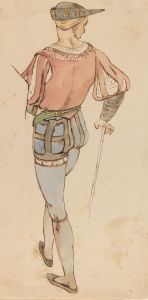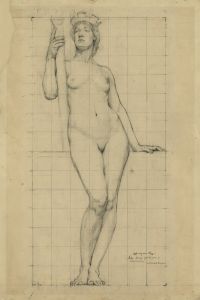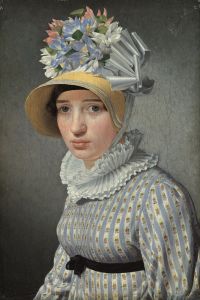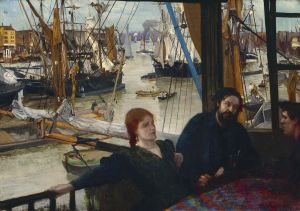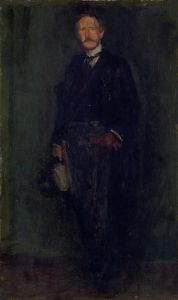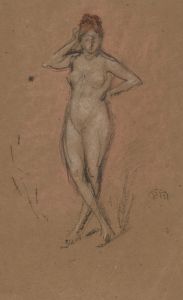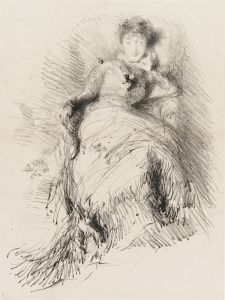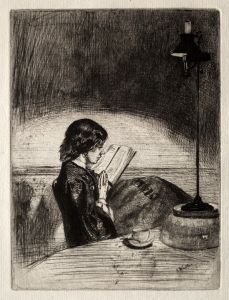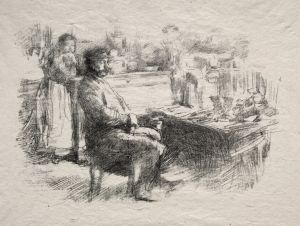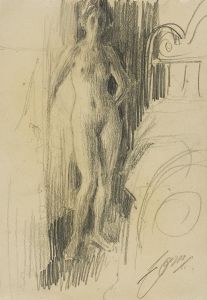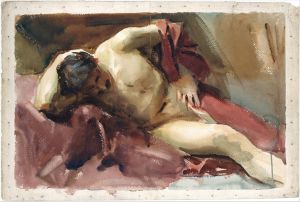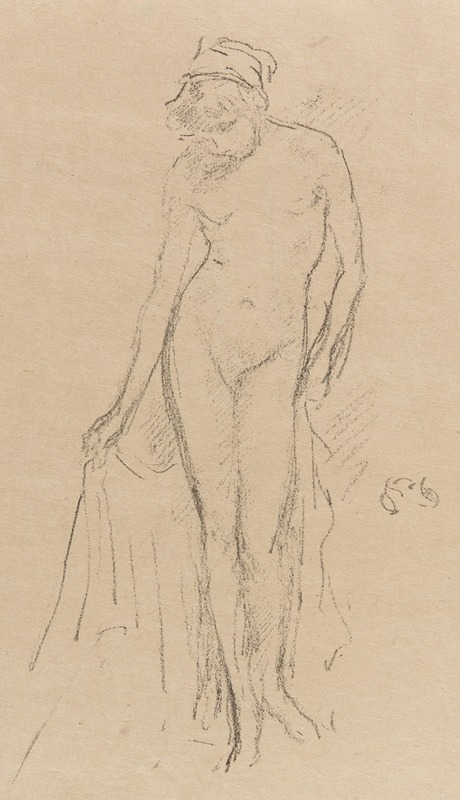
Nude Model, Standing
A hand-painted replica of James Abbott McNeill Whistler’s masterpiece Nude Model, Standing, meticulously crafted by professional artists to capture the true essence of the original. Each piece is created with museum-quality canvas and rare mineral pigments, carefully painted by experienced artists with delicate brushstrokes and rich, layered colors to perfectly recreate the texture of the original artwork. Unlike machine-printed reproductions, this hand-painted version brings the painting to life, infused with the artist’s emotions and skill in every stroke. Whether for personal collection or home decoration, it instantly elevates the artistic atmosphere of any space.
James Abbott McNeill Whistler was an American artist active during the late 19th century, known for his contributions to the Aesthetic Movement and his influence on the art world with his distinctive style and approach to painting. One of his works, "Nude Model, Standing," exemplifies his interest in the human form and his skill in capturing subtle tonal variations.
Whistler was born in Lowell, Massachusetts, in 1834, and spent much of his early life in Europe. He studied art in Paris and eventually settled in London, where he became a central figure in the art scene. Whistler's work is often associated with the Aesthetic Movement, which emphasized beauty and visual harmony over narrative content or moral messages.
"Nude Model, Standing" is a testament to Whistler's focus on form, composition, and the delicate interplay of light and shadow. The painting features a nude female figure standing in a relaxed pose, rendered with Whistler's characteristic attention to detail and subtlety. The background is typically understated, allowing the viewer to focus on the figure itself. Whistler's use of a limited color palette and his emphasis on tonal harmony are evident in this work, reflecting his belief in "art for art's sake."
Whistler's approach to painting was heavily influenced by his interest in Japanese art and design, which is evident in the simplicity and elegance of his compositions. He often employed a technique known as "tonalism," which involves the use of closely related colors to create a sense of atmosphere and mood. This technique is apparent in "Nude Model, Standing," where the soft transitions between light and shadow create a sense of depth and volume.
Throughout his career, Whistler was known for his innovative approach to portraiture and his ability to capture the essence of his subjects with minimal detail. His work often drew comparisons to music, with critics noting the lyrical quality of his compositions. Whistler himself famously titled many of his paintings as "arrangements" or "harmonies," further emphasizing the connection between visual art and music.
"Nude Model, Standing" is a reflection of Whistler's artistic philosophy and his dedication to exploring the beauty of the human form. The painting is part of a broader body of work that includes portraits, landscapes, and nocturnes, all characterized by Whistler's distinctive style and his commitment to aesthetic principles.
Whistler's influence on the art world extended beyond his paintings. He was also known for his writings on art and his role in various legal battles, most notably the famous libel case against art critic John Ruskin. This case, which Whistler won, highlighted the tensions between traditional and modern approaches to art during the period.
Today, Whistler is celebrated as one of the leading figures of the Aesthetic Movement, and his works continue to be studied and admired for their beauty and innovation. "Nude Model, Standing" remains an important example of his contribution to the art world and his enduring legacy as a master of form and composition.





